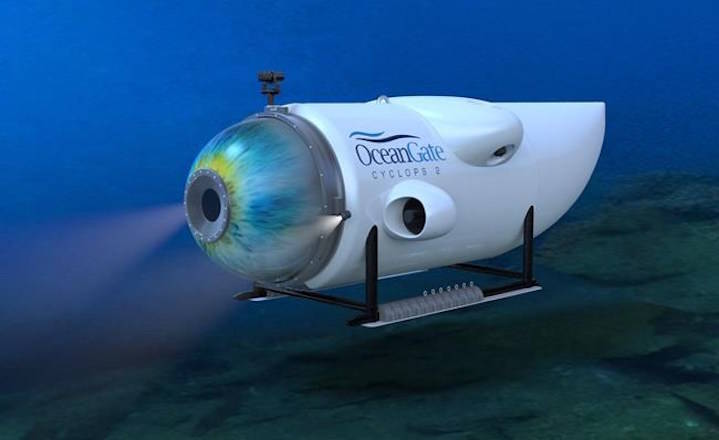Are you a risk-taking adventurer with $130,000 to spare?
The first manned survey of the rusting RMS Titanic in 13 years will depart in June from St. John’s, N.L. — and they’re still taking applications.
“It’s not for somebody who’s frail but it’s not as strenuous as, say, climbing a major mountain or going on a one-week bike trip through the Alps which some of our participants have done,” said expedition leader Stockton Rush, CEO of OceanGate Inc., a private company based in Everett, Wash.
Far more people have explored space than have seen the Titanic, resting about 4,000 metres deep in the North Atlantic off Newfoundland.
Thanks to a scheduling change, three of 54 previously sold-out spots are now available for submersible dives this summer as part of a six-week mission to assess what’s left of the fabled wreck.
Their $130,000 seats — US$105,129 — were priced at the inflation-adjusted cost of a first-class ticket for Titanic’s doomed maiden voyage, and help fund the company’s research. Each participant gets flown out for seven days on the chartered research vessel and at least one dive to the wreck site on a five-person sub lasting six to nine hours.
“We have some folks who are mountain climbers, we have others who’ve been to the South Pole,” said Rush.
“One guy, I think he snowshoed to the North Pole. It’s a varied group but I think the unifying characteristic is they’re adventurous.”
Ages range from 23 to 75.
“He convinced us he’s healthy,” Rush said of the eldest “mission specialist” who will help fund the endeavour while assisting with research and photography. It won’t be a pleasure cruise.
“Quite a few of our participants are in their 50s and 60s,” Rush said. They hail from all over the world, including several Americans, Australians, Brits and others from various parts of Asia and across the globe. They must go through training to escape a helicopter in water and be able to climb a six-metre steel ladder.
There are 18 spots left for a similar expedition in 2019, with others planned in subsequent years. Rush said cutting-edge high resolution imaging and underwater laser scanners will help create a highly detailed 3D virtual model to better track Titanic’s decay.
A big question is the pace at which “rusticles” are devouring its remains.
OceanGate provides manned submersibles for industry, research and exploration but has built a novel sub specifically for the Titanic dives.
Dubbed the Cyclops 2, the sub features a carbon-fibre and titanium hull to drastically lighten its weight.
Tests start Monday in Puget Sound near Seattle, before heading to the Bahamas for deeper dives in April.
“The first trial down to 4,000 metres will just be me,” said Rush, 55. “It should be interesting.
“Certainly your heart gets moving but it’s a very steady process. It’s not as though we go straight to 4,000 metres.”
Repeated trips to gradually greater depths will take about a week, he figures.
Rush laughed when asked what happens if someone needs a bathroom.
“There’s actually something called a low-residue diet they use for the space program,” he explained. “Inside, the humidity’s very high so you don’t have a need to drink water. As long as your system’s empty you’re OK.”
Still, the sub will be equipped with a portable toilet with a little screen for “semi-privacy,” Rush said: “That’s mostly so people don’t worry about it as much.”
The Cyclops 2 is expected to reach St. John’s in May, and anticipation is already building.
Rush said there are plans for presentations at Memorial University of Newfoundland, a public show and tell and maybe even some “shallow dunks” in the St. John’s harbour.
Ron Collier of SubC Imaging, based in Clarenville, N.L., said the company will supply the sub with its latest ultra-high resolution cameras for video and still photos.
“The capabilities that are available today are really staggering compared to what they would have been 10 or 12 years ago,” he said in an interview.
Footage will be gathered carefully so as not to disturb what is considered a grave site, Collier said.
More than 1,500 people died when the so-called unsinkable ship went down after striking an iceberg April 15, 1912, about 600 kilometres off Newfoundland’s southeast tip.
Rush said he hopes the expedition will be the first of many others in the largely unknown deep sea.
“Our hope is it opens people’s awareness of all the amazing things underwater to be researched and explored.”
Sue Bailey, The Canadian Press



